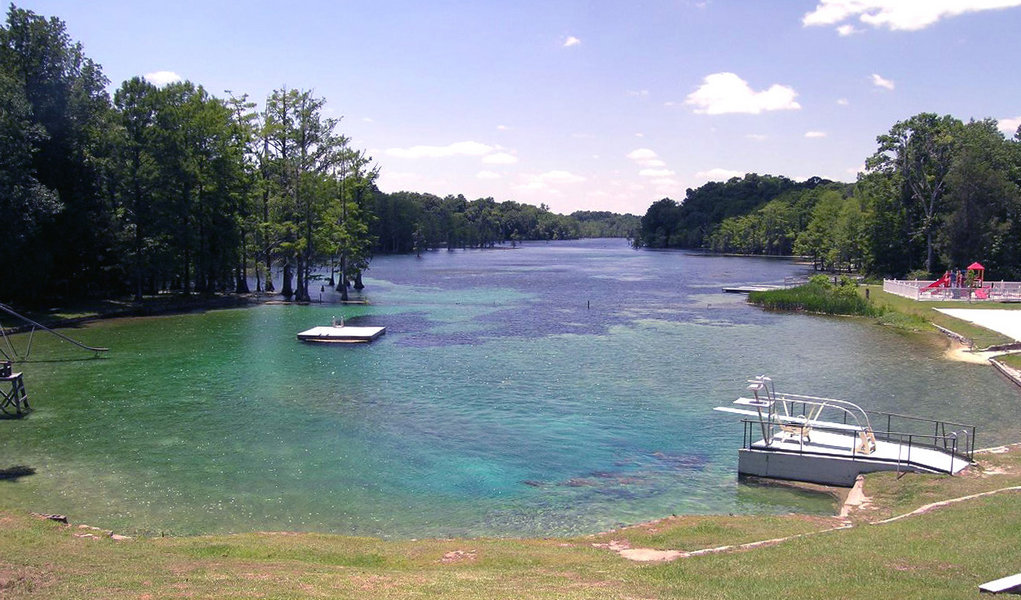The vast majority of domestic wastewater treatment facilities in Florida use chlorination for disinfection. However, there are some rather significant concerns associated with chlorination including the production of potentially hazardous byproducts (chlorinated organic compounds), toxicity concerns from chlorine residual for the biota in receiving surface waters, and the potential hazards associated with handling the chlorine at the treatment plant.
Recognizing the potential adverse impacts of chlorination, the state of Florida encourages the use of alternative disinfection methods. Rule 62-600.440(1), Florida Administrative Code (F.A.C.), states that: "The Department (of Environmental Protection) is aware of the possible harmful effects of chlorine used in conjunction with wastewater treatment and encourages the use of alternative disinfection methods."
UV Disinfection
Many utilities are beginning to evaluate and implement alternative disinfection methods, with UV irradiation among the most popular. UV has long been recognized as an effective disinfectant. However, unlike chlorine, UV does not pose disinfection byproducts, toxicity or hazardous materials concerns.
The knowledge base related to UV disinfection has increased rapidly over the last two decades. For example, 10 years ago the conventional wisdom was that UV was relatively ineffective against Cryptosporidium (a protozoan pathogen). Today we know that UV is very effective (more effective than chlorine) in inactivating Cryptosporidium. It is interesting to note that Germany currently makes widespread use of UV for disinfecting drinking water – a disinfection application with significant public health implications.
UV Disinfection Downloads
Domestic Wastewater and UV Disinfection
Most domestic wastewater treatment facilities in Florida must meet either "basic disinfection" (applies to most surface water discharges) or "high-level disinfection" (applies to many reuse systems). These two levels of disinfection are described in Rule 62-600.440, F.A.C. UV can be reliably used to meet basic disinfection criteria. Basic disinfection essentially requires that the effluent after disinfection contain less than 200 fecal coliforms per 100 mL [see Rule 62-600.440(4), F.A.C. for detailed requirements]. There are a number of treatment facilities that use UV for basic disinfection applications in Florida.
The use of UV for high-level disinfection historically has posed more concern to the department. High-level disinfection, which is used in conjunction with some types of reuse projects (including use of reclaimed water to irrigate residential lawns, areas accessible to the public, and edible food crops), essentially requires that fecal coliforms be reduced below detection [see Rule 62-600.440(5), F.A.C., for detailed requirements]. Filtration is required ahead of the disinfection process and serves as an important and integral part of the overall high-level disinfection process. Florida's high-level disinfection criteria were designed to ensure that the reclaimed water would be essentially virus-free.
The 2003 NWRI guidelines provide detailed guidance for the design of UV systems that meet high-level disinfection. The 2003 NWRI guidelines include a well-defined testing protocol and are applicable to UV systems designed to meet California, Florida and other state standards. DEP will accept UV designs that comply with the 2003 NWRI guidelines and are supported with validation testing reports as a means for providing reasonable assurance that the domestic wastewater treatment facility can meet the high-level disinfection criteria.
The California Department of Public Health (CDPH) maintains a list of UV disinfection technologies that have been accepted as meeting the validation testing under the NWRI guidelines. DEP accepts technologies that have been approved by CDPH. This list is contained in Chapter 4 of the State of California Division of Drinking Water and Environmental Management Treatment Technology Report for Recycled Water.
Both chlorination and UV irradiation are effective disinfectants that can be safely used to disinfect wastewater, reclaimed water and drinking water.
For more information, contact:
Wastewater Management Program
2600 Blair Stone Road, MS 3545
Tallahassee, Florida 32399-2400
850-245-8589


